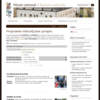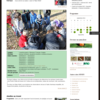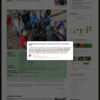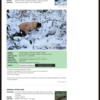Event and User Synchronization
Agenda & Content SynchronisationClient: MNHN
The National Museum of Natural History (Musée national d’histoire naturelle – MNHN) features permanent and temporary exhibitions and offers educative and interesting activities for young people and school classes.
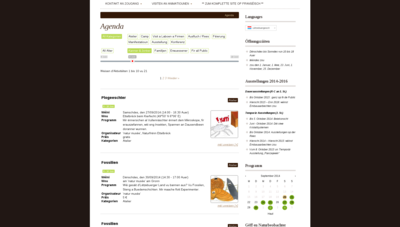
Several WordPress-based websites cater to the respective target groups of the museum, the general public, youth and children, school classes and youth groups.
For those websites, TenTwentyFour has developed – and gradually improved – a plug-in to synchronize the museum’s internal database of educative activities and workshops with their websites. Events and themed visits are retrieved from a Microsoft SQLServer and imported into WordPress as Custom Posts, using custom taxonomies and custom fields (meta-data) for storing and organising the events.
As opposed to earlier versions of the plug-in, the current version relies entirely on native WordPress functionality, bringing no custom database tables or other custom tweaks.
Since the museum’s websites and database contents are both multilingual, imports are done in all available languages using the Sitepress WPML plug-in, despite some of the difficulties we encountered while using as of yet undocumented and unsupported WPML functionality.
The import process uses a range of checks to make sure the already existing items are complete and not missing any details such as location or featured image. Should such be the case, or should any change have been made to the original items in the SQL database, the respective entity is updated in WordPress.
Among the features of the plug-in are a calendar widget displaying upcoming events per day and a search/filter interface for both events and visits, allowing site-operators to restrict the displayed events to a thematic category and visits to even further narrow down their search.
Cross-platform user accounts and login management Client: MNHN
Not only does the MNHN manage a huge amount of events per year, it also has an impressive user base. Their users consist of parents and youngsters who have signed up to events over the years, of educational personnel who has booked one of their visits or mobile trucks, and of their guides and workshop tutors.
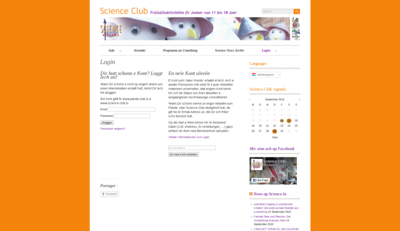
In order to allow all of those users to authenticate on any of the MNHN’s websites, manage their children or themselves as participants, manage subscriptions to magazines, and on-line newsletters, sign-up for events, consult the state of their registrations or the history of events they – or the people they manage – participated in.
Using a central database, all users are dynamically synchronized between the individual websites, allowing users to log-in anywhere using the same account and access the same information. Existing users are securely migrated to the new format, relying on email confirmation to make sure the users are whom they claim to be. As for the Agenda-Plug-in described above, all contents are localized (l10n) in the languages used by the MNHN’s web-sites.
Technologies used in building this application
wkhtmltopdf
wkhtmltopdf and wkhtmltoimage are open source (LGPL) command line tools to render HTML into PDF and various image formats using the QT Webkit rendering engine. These run entirely "headless" and do not require a display or display service. (+)
